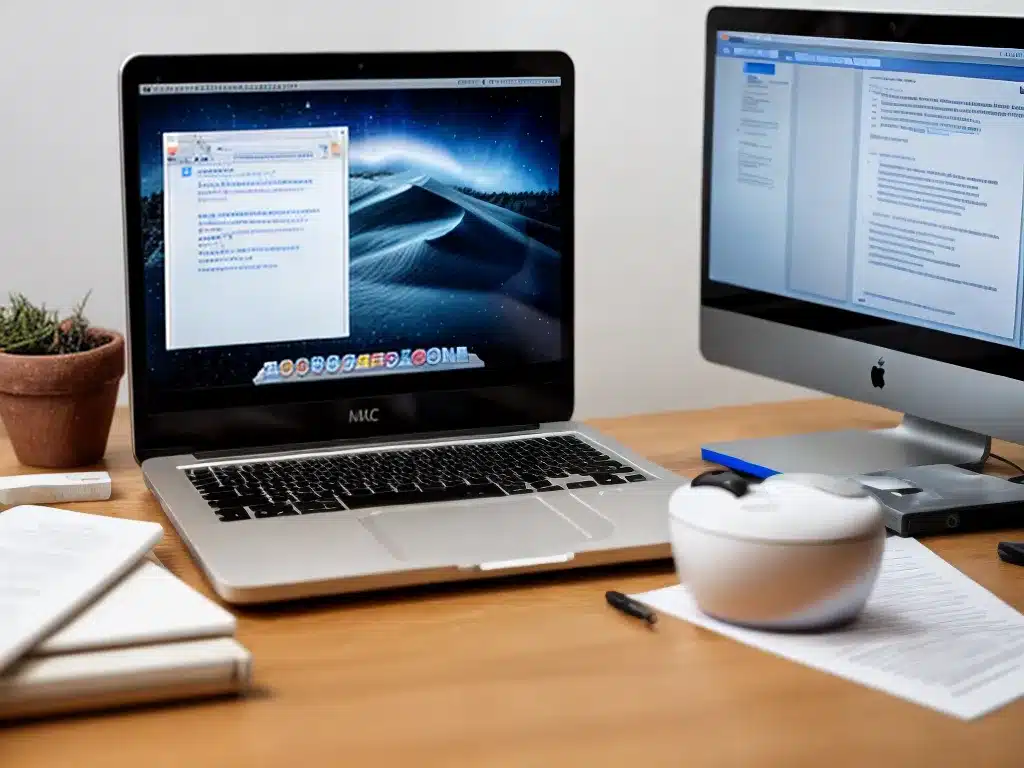
When my Mac computer became unbootable, I was worried about losing all of my important files and data. As someone who relies on my Mac for work and personal use, not being able to access the internal drive was stressful. However, with the right tools and techniques, recovering data from an unbootable Mac is possible.
Determine Why Your Mac Won’t Boot
The first step is to diagnose why your Mac won’t boot up properly. There are several common reasons a Mac can become unbootable:
-
Corrupted system files – Critical OS X system files may have become damaged, preventing the operating system from loading. This is often caused by a software conflict or interrupted system update.
-
Drive errors – The Mac’s hard drive or SSD may have developed bad sectors or mechanical issues that prevent the drive from being read by the system. This can happen from accidental damage or normal wear and tear over time.
-
Incompatible software – Installing software not designed for your version of OS X can sometimes cause boot issues. Rebooting in safe mode often resolves this.
-
Hardware failure – Faulty RAM, failed drive cable, or motherboard issues can lead to startup problems. You’ll need to diagnose hardware issues separately.
Knowing the cause of your Mac not booting properly will help determine the best data recovery approach.
Connect the Unbootable Drive to Another Mac
Since the original Mac cannot boot up, connecting its drive to a functioning Mac is key for data access. There are a couple ways to do this:
Use Target Disk Mode
Target disk mode allows a Mac to be turned into an external drive that can be plugged into another Mac. Here’s how:
- Connect the two Macs with a Firewire or Thunderbolt cable
- Power on the unbootable Mac and immediately hold down the T key as it starts up
- The Mac will display a small target icon indicating it is now in target disk mode
- The drive should now mount on the working Mac, allowing data access
Remove the Drive and Use an Enclosure
Alternatively, you can physically remove the drive from the unbootable Mac and place it into an external drive enclosure or adapter that connects via USB, Thunderbolt, etc. Some key steps:
- Shut down computer – Power off the Mac and unplug all cables before removing drive
- Open case – Carefully open the case and locate the hard drive or SSD
- Disconnect cables – Detach the drive cables from the logic board
- Mount in enclosure – Place drive in enclosure, reconnect cables, close up
- Connect enclosure – Hook the enclosure to your working Mac with a data cable
- Mount drive – The drive should appear on the working Mac desktop
Once connected to another system, you can access the data just like any external drive.
Browse and Recover Data From Drive
With the unbootable drive connected to a working Mac, you can now browse for files and copy important data to safety.
Use Finder to Recover Files
The easiest way is to simply use Finder to explore the drive and selectively copy your important files to your main Mac or an external backup drive. Navigate through the User folder, Documents, Desktop, and anywhere else you have files stored.
Use a Data Recovery App
For more robust file browsing and recovery, use a dedicated Mac data recovery app like Stellar Data Recovery. This provides tools to:
- Scan drives for recoverable data
- Preview found files before recovering
- Retrieve data from crashed or corrupted drives
- Selectively recover specific file types
Saving your recovered files to a different drive avoids overwriting the original data.
Repair Disk Errors
If you’re unable to access certain files on the unbootable drive, there may be directory damage or disk errors preventing access. Use a disk repair tool like DiskWarrior to fix errors and rebuild directories so you can recover missing files.
Restore Data and Get Mac Running Again
Once you’ve successfully recovered your important data, you can take steps to get your original Mac running again. Some options include:
- Reinstall macOS from recovery
- Use Target Disk Mode for system reinstall
- Erase drive and do a clean install
- Replace failed drive if hardware issue
- Take Mac to repair center for diagnosis
The key is getting your files safely backed up first before attempting to fix the underlying boot issues. With the proper steps, you can recover data from an unbootable Mac and avoid catastrophe. Let me know if you have any other questions!












